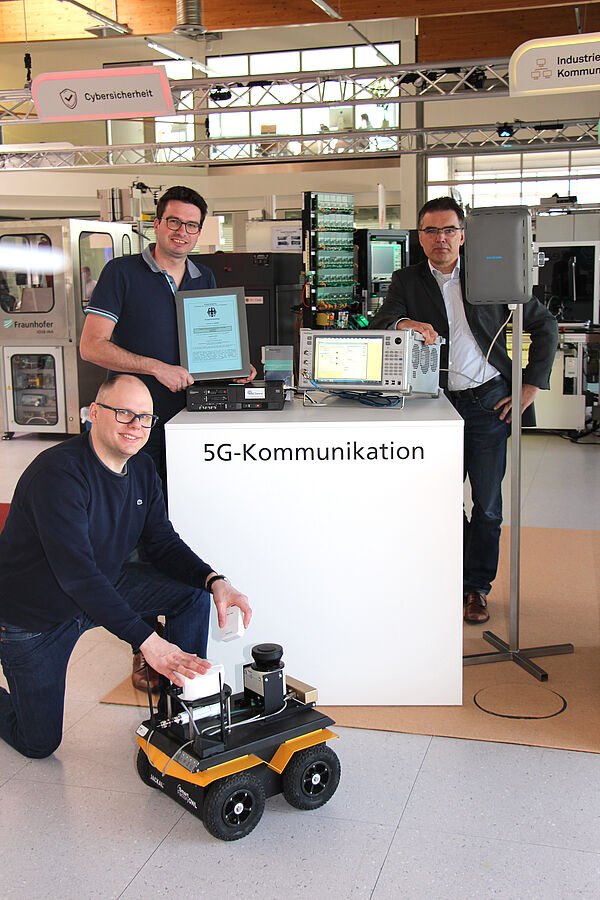The new 5G radio network standard is the talk of the town worldwide - especially in the private mobile communications sector. But it opens up numerous new possibilities, especially for wireless, flexible and fast communication. Fraunhofer in Lemgo, together with the Institute for Industrial Information Technology (inIT) of TH OWL, is therefore now operating one of the first private 5G networks ever: The aim is new industrial applications and business models for automation and production. After all, reliability, security and speed are the key issues here.
Inconspicuous at first: an official certificate from the German Federal Network Agency, a base station with an antenna, a radio measuring station and a transport robot that looks like a remote-controlled car. What the three Lemgo scientists are showing, however, could be the data communication of the future in manufacturing companies: At SmartFactoryOWL, a joint initiative of Fraunhofer IOSB-INA and TH OWL, one of the first private 5G networks has been in operation since March. Today, this technology is considered to have the characteristics that the widely used WLAN and the previous mobile radio systems cannot offer: a guaranteed transmission quality with firmly defined bandwidths and transmission times. With the new 5G network, the Lemgo site is once again demonstrating its pioneering role in industrial communications. Prof. Jürgen Jasperneite, head of Fraunhofer IOSB-INA, is pleased about the new equipment in the Lemgo research and demonstration factory: "Two weeks ago, we received the frequency allocation and the operating permit from the Federal Network Agency for a private network. Now we have the corresponding hardware for the 5G base station and core network in-house, so that we can work on and test a wide variety of use cases together with partners in research and industry projects from now on."
5G: Flexible resource assurance for industrial applications
What is special about 5G wireless technology is that it is suitable for applications that require transmission or response times of less than a thousandth of a second. In contrast to WLAN, the main advantage is that the so-called quality of service (speed and transmission time) can be guaranteed with the help of "network slicing". This gives the operator of a "private" 5G network complete control over the available resources and a high degree of flexibility. Together with a computing cluster (edge computing) already present at SmartFactoryOWL, a test bed exists for many real-time applications.
One application area for 5G in industry is the control of mobile robots or the remote control of automated machines and systems. Another example is driverless transport systems in intralogistics, whose control can be bundled, from a computing cluster in the factory. "All data-intensive applications with high bandwidth requirements, e.g. virtual reality or Big Data applications - in product start-up phases or service cases, will find a suitable technology in 5G," summarizes Jasperneite.


